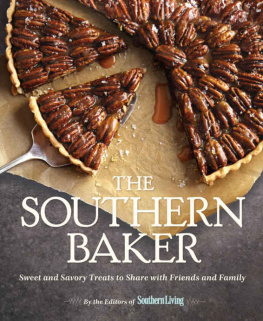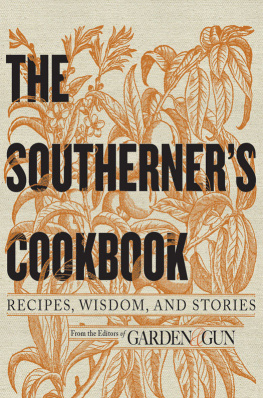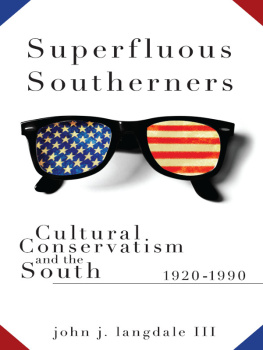CONTENTS
Guide
I DONT KNOW IF YOUNG BOYS STILL FOLLOW coonhounds into the Ozark Mountains without a trace of adult supervision and without a touch of modern communication devices, but I hope they do. I didnt grow up anywhere near the Ozarks, but as a boy in the coastal environs of Savannah, Georgia, I happily got lost in the pages of Where the Red Fern Grows by Wilson Rawls. In my family, it was a reading rite of passage. The book, a tattered paperback copy, had been handed down from my three older brothers. When my turn came, I opened it up and couldnt stop reading, staying up well after I should have been asleep to find out if young Billy Colman got his coonhounds, if they treed that first raccoon, if the fabled ghost coon eluded Little Ann and Old Dan, if they won the coveted gold cup in the coonhound competition, and, in the end, if the mountain lion spelled the end to perhaps the most famous pair of hunting dogs in history. What I discovered then was that a book could rip your heart right out, causing you to shed tears, real sobbing tears, on those thin, yellowed pages.
So when the entire Garden & Gun editorial team held our first daylong brainstorming session to discuss what wed include in this book, I suggested Where the Red Fern Grows when we hit the W chapter. The books Southern setting made it a viable choice, and besides my own personal connection, its impact on readers across the South and beyond made it a worthy inclusion. The staffs passions informed many choices. Deputy Editor David Mezz, the new owner of a jon boat, felt the iconic watercraft deserved a spot in the book. Design Director Marshall McKinney made a strong pitch for the bar Earnestine & Hazels (and its Soul Burger) in his hometown of Memphis. And Associate Editor Elizabeth Hutchison wanted to cover the Georgia/South Carolina peach wars. (A touch biased, Hutchison has three generations of peach farmers from Filbert, South Carolina, in her family.)
Of course, no one book could include every aspect of Southern life and culture. Rather than trying to make the book an all-encompassing academic and historical tome, we wanted it to take readers on a walkabout across the contemporary Southern landscapeits institutions, people, culture, and influences. Youll find entries on modern touchstones such as Pappy Van Winkle and Waffle House as well as influential figures such as Edna Lewis and Ralph Stanley and insightful pieces on topics and events that shaped where we are today, from the Civil War to the lunch counter protests of the civil rights movement.
We also tapped some of the Souths finest writers and prominent personalities for their expertiseRick Bragg on Harper Lee; Southern Foodways Alliance founding director John T. Edge on his mentor John Egerton; singer-songwriter and Hank Williamss granddaughter Holly Williams on the Grand Ole Opry; food historian Jessica B. Harris on okra; and humorist Roy Blount, Jr., on humidity, among many others.
These days Im a long way from my bedroom where I stayed up late reading Where the Red Fern Grows. Though I do keep a first edition of the booka gift from my wife, Jennyon my bookshelf. And one day I hope to find my children up past their bedtime reading it by the gleam of a flashlight, captivated by words on a page.
As for this book, I hope youll find it both entertaining and informative, and that it sheds light on where the South has been and where its going.
DAVID DIBENEDETTO
Editor in Chief, Garden & Gun
CHARLESTON, SOUTH CAROLINA
FOR THE RECORD, ABSINTHE WILL NOT MAKE you hallucinate forest elves or slice off your ear. More than a century after the European spirits bohemian mystique begot a national panic in the United States, it isnt even illegal anymore. A New Orleans environmental chemist named Ted Breaux brought an end to its stateside ban with a series of studies in the early 2000s. His conclusion: the Green Fairy doesnt contain nearly enough toxic thujonea by-product of one of its key ingredients, wormwoodto trigger hallucinations, and is therefore no more hazardous or morally degenerative than any other high-proof spirit. Sort of disappointing, no? But now, you can drink the herbal spirit as your ancestors did, free of gothic overtones. In the Crescent City, folks have long been fond of the slushy absinthe frappso fond that in 1934 they invented anise-flavored Herbsaint to replace the then banned base spirit. The flip side of the standard baroque spoon-and-sugar-cube method of absinthe drinking, the frapp, a blend of absinthe, soda water, and mint over crushed ice, is wonderfully refreshing on a clear summer day.
ACADIANS CAME TO BE KNOWN AS CAJUNS after they moved to Louisiana and lost a syllable or two. See .
T HE SOUTHERN ACCENT IS ONE OF OUR nations greatest treasures. Its beauty rivals that of a songbird or the most resonant cello. Had the Southern accent not been invented, our ears would have fallen off long ago, or become vestigial, fleshy cauliflowers hanging off the sides of our heads, for without the Southern accent there would have been nothing much worth listening to. Someone, somewhere, can make a case that Im exaggerating its importance to us as a people and to America, but I can assure you I am not.
Maybe I am. But its lovely, isnt it, the Southern accent? Its not because I have one myself that I say this, because my accent is not what it could be: years of watching I Dream of Jeannie growing up have me talking more like an out-of-work B actor than like my grandmother Eva Pedigo, who came from Savannah, settled in Birmingham, and sounded as if she marinated her vowels in butter overnight.
An accent is your vocal personality. Its like a hairstyle or a favorite pair of shoes, the only difference being that its in your throat. Theres a Northern accent as well, and its easily distinguishable from a Southern accent the same way a paper bag full of broken glass is distinguishable from a cashmere scarf. But when you leave the South and head in other directions, accents tend to disappear, the song of language is lost, and what youre left with is bland communication, meaning without music.
Its amusing, at least to me, to hear scholarly argot used to understand and investigate our day-to-day lives, especially the most resolutely nonscholarly subjects, like Southern English. My wife, a Vermonter, had no idea what fixin to meant when she first heard it. Had she researched the phrase, she would have learned that it indicated immediate future action. I could have told her that. A Southern drawl is vowel breaking; thats what you call it if youre in the language business. Vowels are broken into gliding vowels, making a one-syllable word like cat sound as if it might have two syllables (something like ca-yat). People not from the South say that sounds stupid, but I say Im rubber and youre glue, and anything you say bounces off me and sticks to you.
A Southern accent is not a single accent. There are many different Southern accents, some so distinct that an Alabama native like me will have no idea what that Carolinian might mean with the sounds coming out of his mouth. The Southern accent baseline is the merging of certain wordspen and pin, cot and caught. Why we talk the way we do is due to an ironic mlange of the speech of British immigrants in the seventeenth and eighteenth centuries and the Creole speech of African slaves. Today, believe it or not, Southern is the single most spoken accent in America. The rapidly growing number of Southern-accent speakers is due either to the fact that were having a lot more children down here than they are anywhere else, or the fact that were getting converts from Boston and New Jersey, seeking a better life. Probably both.





